3i – Portable Device for On-line Insulation Monitoring in Switchgear Cells and HV/MV Cables by Partial Discharges
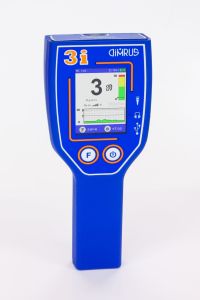
The multipurpose «3i» device is used for on-line insulation condition assessment in the following equipment:
- 6÷35 kV switchgears of various designs;
- Cable terminations and joints;
- High-voltage gas-insulated equipment (Gas-Insulated switchgear, GIS) of any rated voltage;
- The tanks of power transformers, breakers, etc.
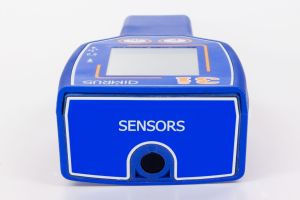
The Device Basics
The «3i» multipurpose portable device (Intellectual Insulation Indicator) is used for effective online monitoring of high-voltage equipment insulation.
The «3i» device measures and analyses partial discharges (PD). For effective PD measurement and noise rejection, there are two types of sensors used in the device: the acoustic sensor and the TEV sensor. Both the sensors are inbuilt, and so there is no need in any connection cables.

At the side of the device, there are the external connections for USB, Headphones, External «TEV» and external acoustic sensor.
The in-built battery is charged by the standard USB port. The same port and cable is used for PC connection.
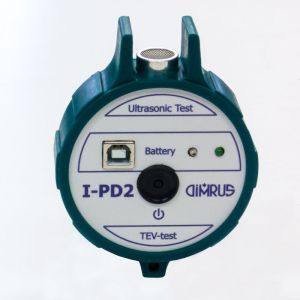
In the standard delivery set, there is a test generator "I-PD2", designed to test the acoustic and "TEV" channels.
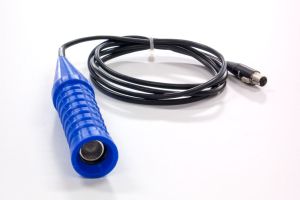
In addition, there is an external acoustic sensor "AR-Sensor" in the standard delivery set. The synchronous use of the built-in and external sensors allows carrying out measurements at different points of the equipment, and more accurately determines the location of the defect. The use of external sensors is also effective in hard-to-reach places, where the device is impossible to install.

The device can be used by the staff with no special training, as the device is easy to operate and maintain. In the measurement mode the device is operated by the switch button on the front panel. After pressing the button, the device switches on and starts measuring. After second pressing of the switch button, the measurements stop and the data is saved in the device memory. For the next measurement, press the switch button again.
For each type of the equipment, you should set the levels of insulation condition, determined by PD activity. The levels are «normal level» (green color), «warning level» (yellow) and «alarm level» (red). With the color signal lights, you can effectively assess the insulation condition while measuring.
If partial discharges are measured with the acoustic sensor, the sensor should be pointed at the object of measurement. Moving the device along the object allows identifying the zone of maximum PD activity.
If partial discharges are measured with the inbuilt «TEV» sensor, then the device should be pressed to the metal surfaces of the enclosure or the tank. The closer the device to the insulation defect, the greater the PD amplitude.
For comparing PD activity in different parts of the monitored equipment, there is a 15-second PD activity trend at the bottom of display.

Additionally, you can efficiently trace the PD level and intensity using stereo headphones. In one ear, you hear the modified sounds produced by partial discharges and coming from the acoustic sensor, and in the other – those coming from the «TEV» sensor. For the effective analysis and defect location, the level of audio signals is proportional PD pulse amplitude, and the signal frequency is proportional to the number of the pulses measured.
The «3i» device is for mass periodic inspections of the high-voltage equipment.
First, in this mode, the database of the monitored equipment is created with «iNVA» software, and all the points for periodic PD measurements are defined.
This mode is for routing way of the measurements. The route of the measurements is generated on a computer and is uploaded into the device. The measurements are taken according to the given route; the data is stored in the device memory and is easily transferred to «iNVA» database.
In addition, the routing information can be recorded in RFID tags. The measurements in this way can be associated to a definite piece of equipment and a definite place on it.

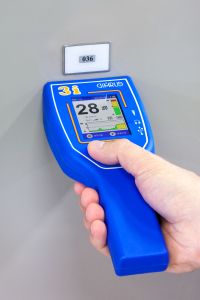
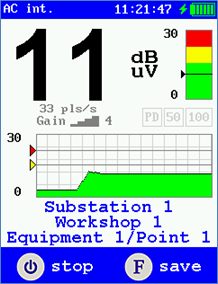

For example, if the route includes switchgear cells, then after loading the data from the device, one can observe the distribution of the "defect field" in cells, the influence of neighboring cells on each other, which will help to quickly locate the problem cell.
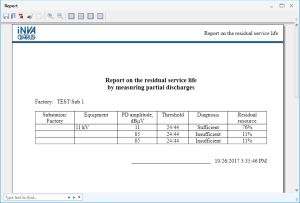
Maintaining a database of periodic measurements allows you to effectively assess the growth of a defect and calculate the remaining life of the equipment. In this case, the use of the indicator type device is most effective. The "iNVA Portable" software allows you to create reports about the technical condition of equipment (exceeding the thresholds), the time of repairs, the time of the next measurements and a report about the remaining equipment resource.
The «3i» Base Delivery Set
| Position | Quantity, pcs. |
| The «3i» device | 1 |
| Charger with USB output | 1 |
| USB cable | 1 |
| Headphones | 1 |
| AR-Sensor acoustic sensor | 1 |
| I-PD2 calibrator | 1 |
| «iNVA Portable» software | 1 |
| Transportation case | 1 |
| User manual and test report | 1 |
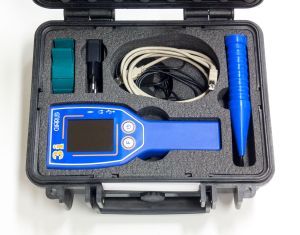
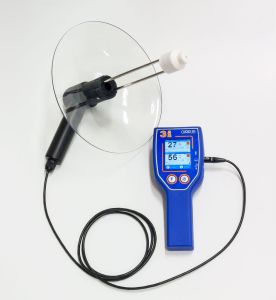
Advantages of using an extended set of sensors
The use of additional sensors included in the extended kit allows the use of new functions of the «3i» device.
An external directional microphone with a parabolic dish «AR-Loc» allows for efficient analysis of discharge activity remotely at distances up to 100 m with an accuracy of 1 m. The sensitivity gain is +20dB.
For the convenience of location, the directional microphone has a bright laser pointer.
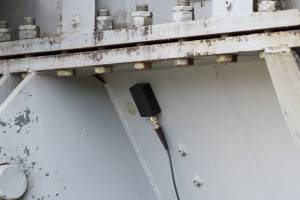
The external «TEV» sensor is applied directly to the grounded metal housing of the monitored object. The sensor is fixed to the equipment using an in-built magnet located inside the sensor housing. The sensor allows doing the measurements in hard-to-reach places.
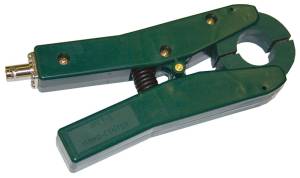
External «HFCT» sensor (High Frequency Current Transformer), is used for recording pulses from partial discharges in high-voltage switches, switchgear cells and suitable cable lines, in grounding circuits of power transformers.
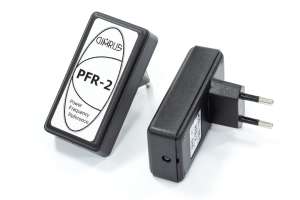

Together with the «PFR-2» reference signal transmitter, it is possible to work with the «PRPD» (Phase Resolved Partial Discharge) diagram. It is possible to save the diagram in the device, load it into the «iNVA Portable» software for further analysis by the «PD-Expert» expert system, and determine the type of defect.
The «3i» Extended Sensors Delivery Set
| Position | Quantity, pcs. |
| «AR-Loc» external acoustic sensor with parabolic dish | 1 |
| External «TEV» sensor with cable | 1 |
| External «HFCT» sensor with cable | 1 |
| Reference signal transmitter «PFR-2» | 1 |
| Transportation case | 1 |
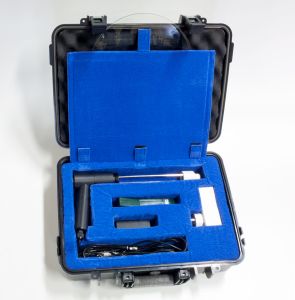
The «3i» Device Specifications
| In-built PD sensors | АС, TEV |
| In-built acoustic sensor frequency range, kHz | 40 ± 2 |
| In-built «TEV» sensor frequency range, MHz | 10 ÷ 100 |
| AC channel dynamic range, dB | 80 |
| TEV channel dynamic range, dB | 60 |
| External ports | USB, headphone, external sensor |
| Battery life, hours | 12 |
| Operating temperature range, °C | -20 ÷ +55 |
| Dimensions, mm | 85 × 45 × 220 |
| 3i device weight, kg | 0,4 |




